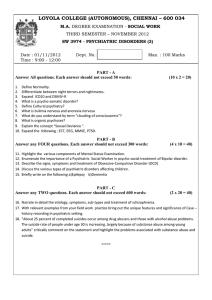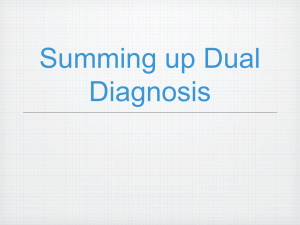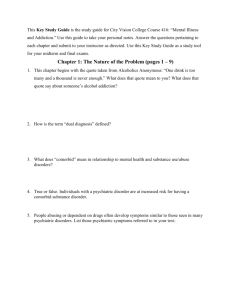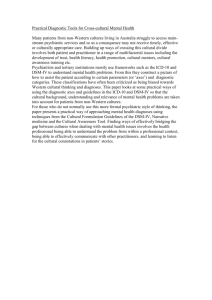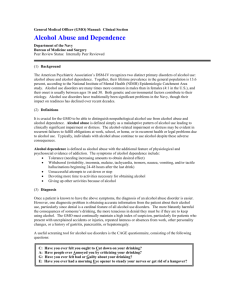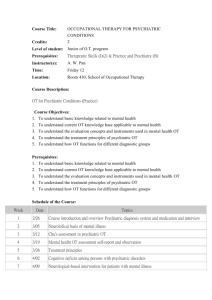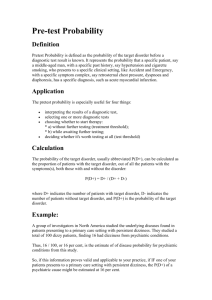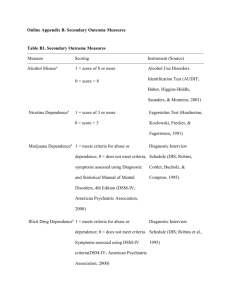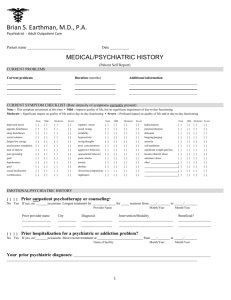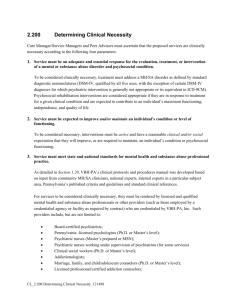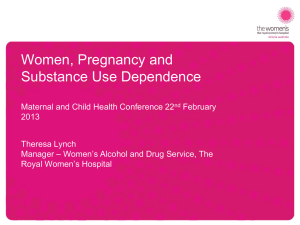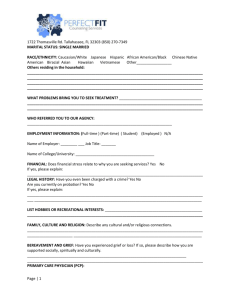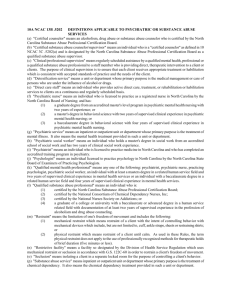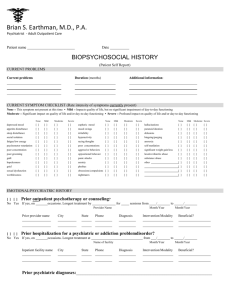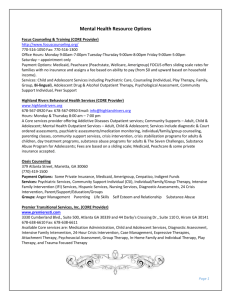Diagnostic Evaluation
advertisement
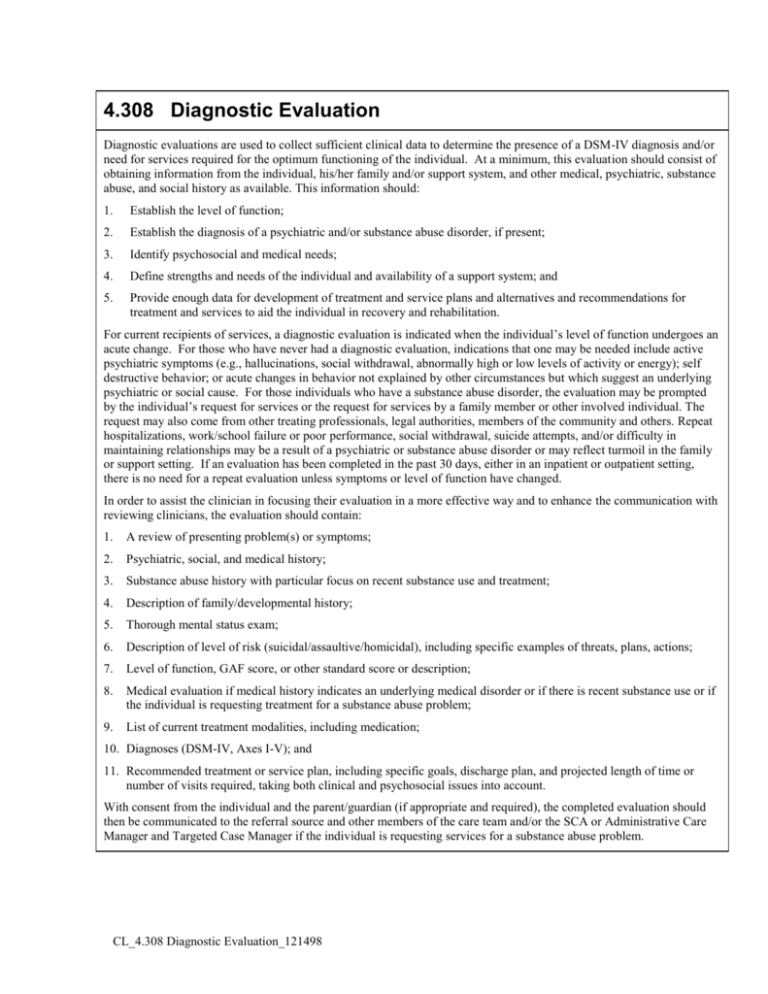
4.308 Diagnostic Evaluation Diagnostic evaluations are used to collect sufficient clinical data to determine the presence of a DSM-IV diagnosis and/or need for services required for the optimum functioning of the individual. At a minimum, this evaluation should consist of obtaining information from the individual, his/her family and/or support system, and other medical, psychiatric, substance abuse, and social history as available. This information should: 1. Establish the level of function; 2. Establish the diagnosis of a psychiatric and/or substance abuse disorder, if present; 3. Identify psychosocial and medical needs; 4. Define strengths and needs of the individual and availability of a support system; and 5. Provide enough data for development of treatment and service plans and alternatives and recommendations for treatment and services to aid the individual in recovery and rehabilitation. For current recipients of services, a diagnostic evaluation is indicated when the individual’s level of function undergoes an acute change. For those who have never had a diagnostic evaluation, indications that one may be needed include active psychiatric symptoms (e.g., hallucinations, social withdrawal, abnormally high or low levels of activity or energy); self destructive behavior; or acute changes in behavior not explained by other circumstances but which suggest an underlying psychiatric or social cause. For those individuals who have a substance abuse disorder, the evaluation may be prompted by the individual’s request for services or the request for services by a family member or other involved individual. The request may also come from other treating professionals, legal authorities, members of the community and others. Repeat hospitalizations, work/school failure or poor performance, social withdrawal, suicide attempts, and/or difficulty in maintaining relationships may be a result of a psychiatric or substance abuse disorder or may reflect turmoil in the family or support setting. If an evaluation has been completed in the past 30 days, either in an inpatient or outpatient setting, there is no need for a repeat evaluation unless symptoms or level of function have changed. In order to assist the clinician in focusing their evaluation in a more effective way and to enhance the communication with reviewing clinicians, the evaluation should contain: 1. A review of presenting problem(s) or symptoms; 2. Psychiatric, social, and medical history; 3. Substance abuse history with particular focus on recent substance use and treatment; 4. Description of family/developmental history; 5. Thorough mental status exam; 6. Description of level of risk (suicidal/assaultive/homicidal), including specific examples of threats, plans, actions; 7. Level of function, GAF score, or other standard score or description; 8. Medical evaluation if medical history indicates an underlying medical disorder or if there is recent substance use or if the individual is requesting treatment for a substance abuse problem; 9. List of current treatment modalities, including medication; 10. Diagnoses (DSM-IV, Axes I-V); and 11. Recommended treatment or service plan, including specific goals, discharge plan, and projected length of time or number of visits required, taking both clinical and psychosocial issues into account. With consent from the individual and the parent/guardian (if appropriate and required), the completed evaluation should then be communicated to the referral source and other members of the care team and/or the SCA or Administrative Care Manager and Targeted Case Manager if the individual is requesting services for a substance abuse problem. CL_4.308 Diagnostic Evaluation_121498
